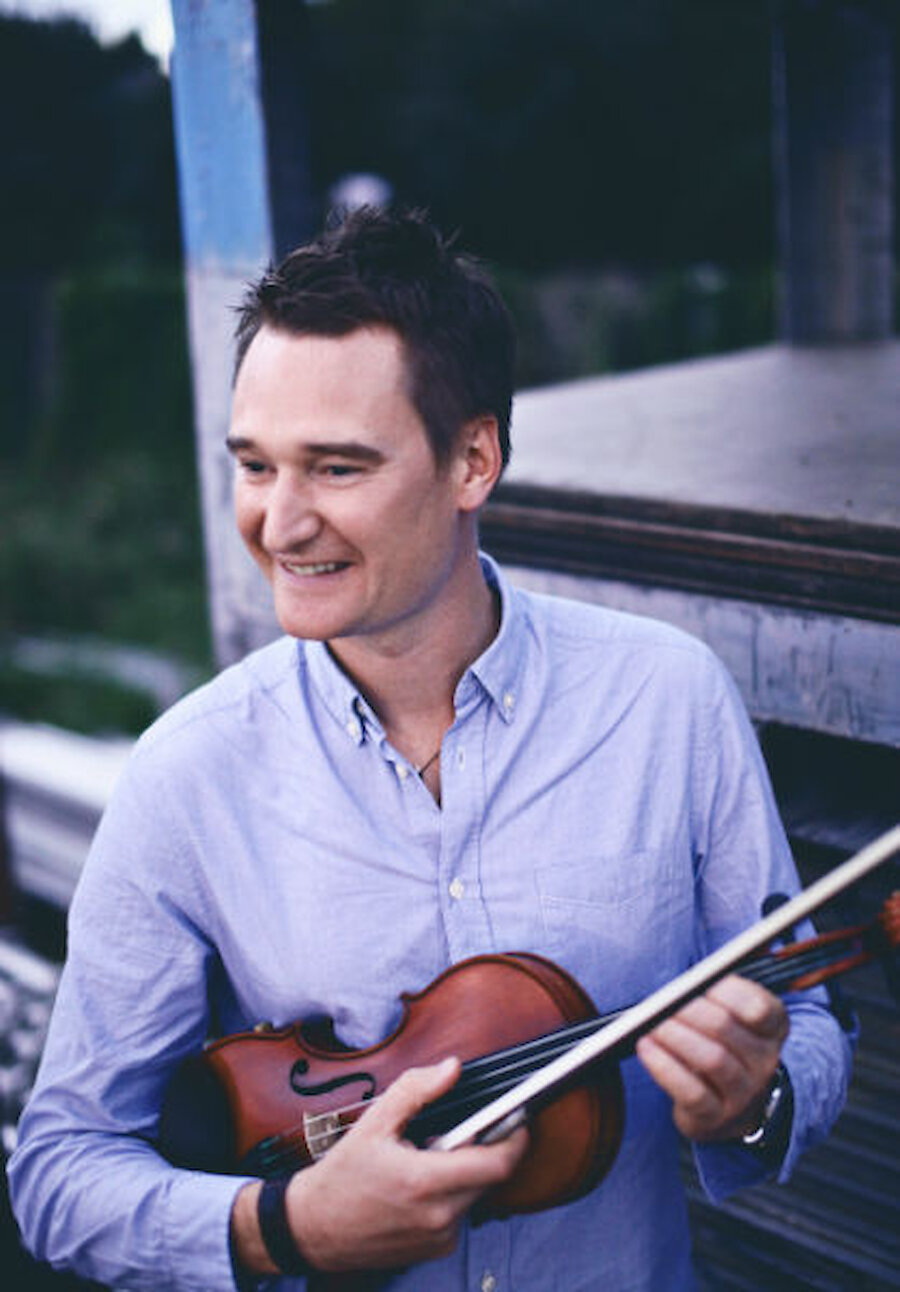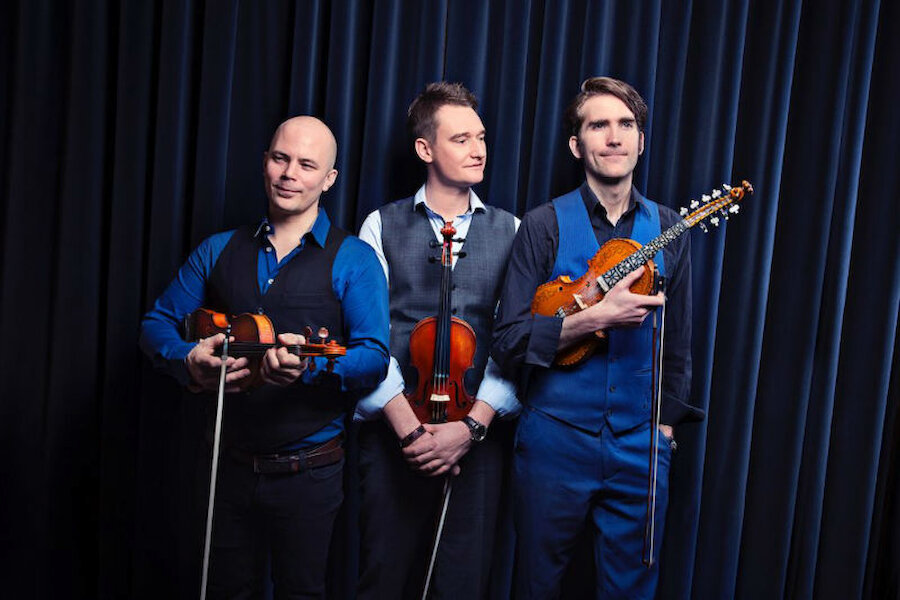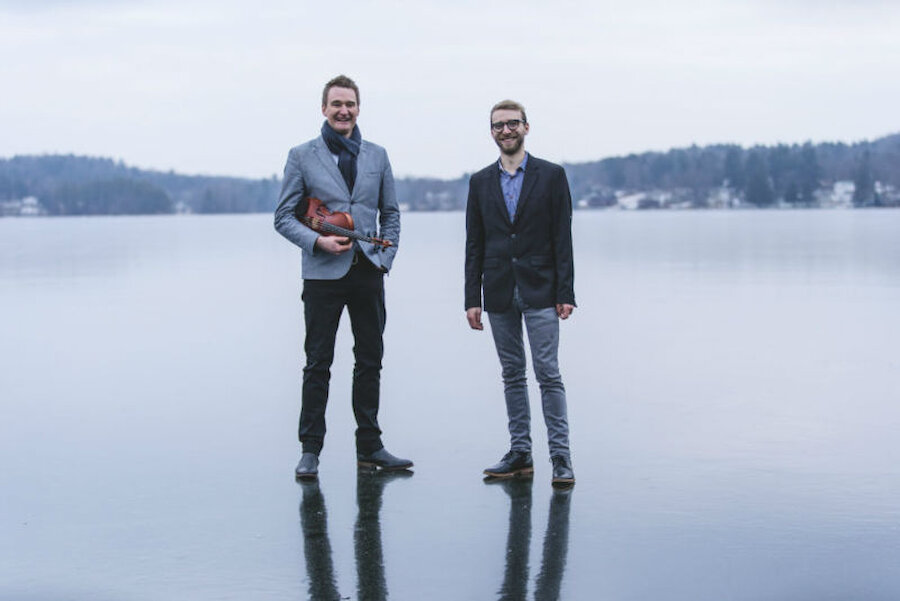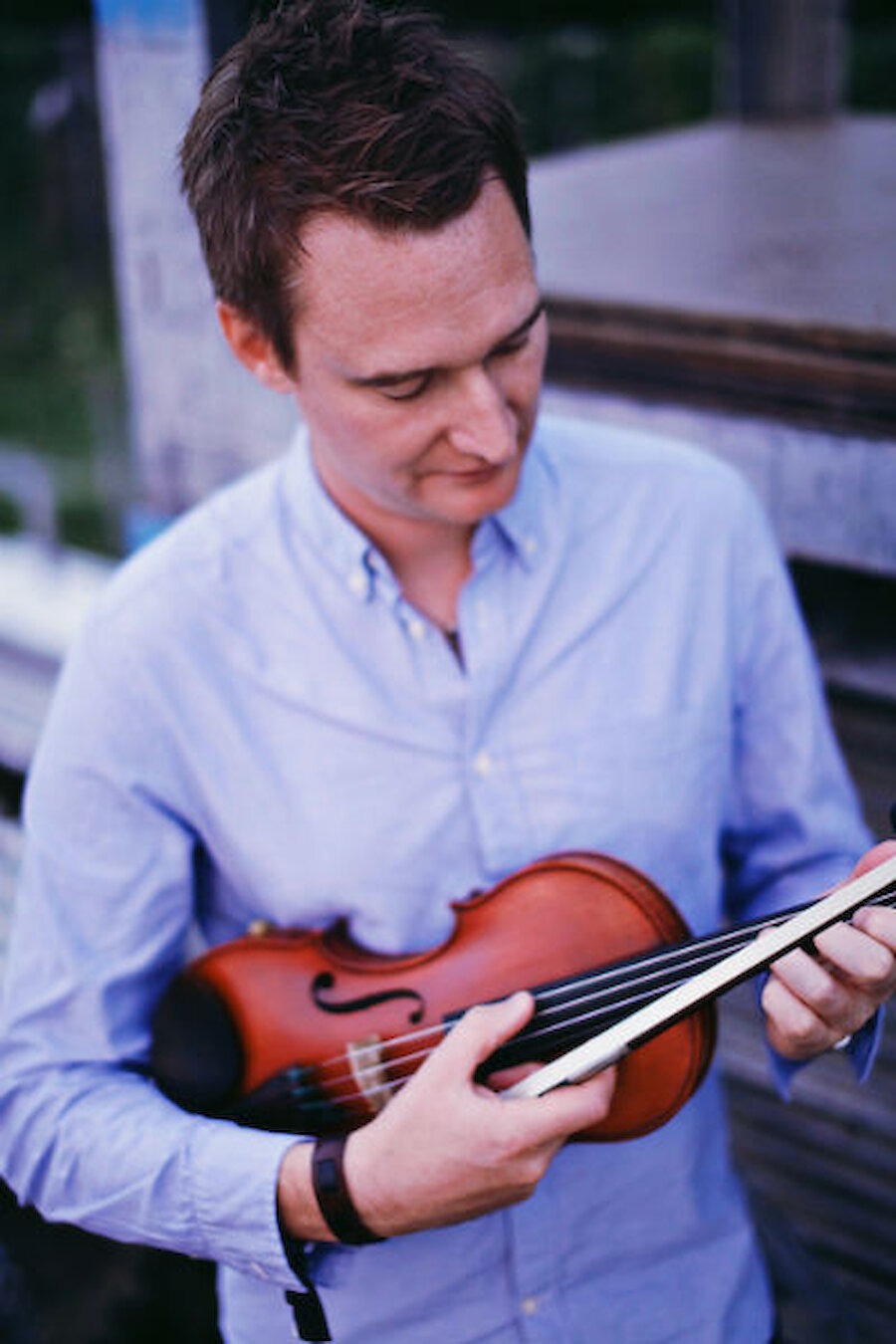Another encounter led in the same direction “I met a piano player from America called Neil Pearlman who’s into Cape Breton music but he’s also from a jazz background. I really love jamming with him and he’s amazing at improvising. We started a duo, with a new album. So, I suppose I’m starting to get into that side of things as well.”
Kevin, Olav and Anders don’t confine themselves to playing concerts and festivals. They’re also committed to developing fiddle-playing skills among all those who want to learn. One way of doing that is through fiddle camps.
“We had the idea, because there’s so many folk that ask, at concerts, ‘where can we learn your music and do you have workshops?’ So we thought, why don’t we just have a camp? We’re quite active in teaching at various other camps, in various places. We had the idea that we’d move around, so we’ve had it in Norway and Sweden and ideally it would have been in Shetland this year, but then I got asked to do the Folk Frenzy, so it would have been a clash. But we’re having it in Scotland this year – if it goes ahead.” Like all events in the coming months, there’s no certainty that it can happen.
The band has also published two tune books containing the music from their two albums, which are a valuable resource for teaching and learning.
Technology plays a part, too. Kevin has also done quite a lot of one-to-one tuition via Skype, and he’s not alone among Shetland tutors in providing online lessons. “Generally speaking, it works fine” he says, though “folk that haven’t done it before find the thought of it a bit weird!”
There are just a couple of things to bear in mind. It’s not ideal for beginners, “because at that stage you need to be a peerie bit hands-on, moving the fiddle into the right position” and it’s not possible to play together with the student. But, “for intermediate and upper levels, it’s great!” Anyone who’s interested in finding out more about Kevin’s teaching can contact him via his own website.
Given the current pandemic, it may be a while before audiences can once again enjoy, in live concerts, the superb playing of Kevin and The Nordic Fiddlers’ Bloc, but for the moment it’s possible to hear them – and the other bands that he’s involved with – on CD or via online streaming sites. Best of all, Kevin is also embarking on live-streamed performances!
In these unique circumstances, supporting our creative community in any way we can is vital; but we must hope that it won’t be too long before, once again, they can inspire and energise us in person.





